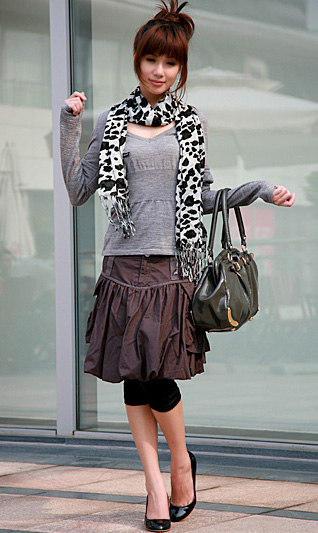In cold climates, a thick knitted scarf, often of wool, is tied around the neck to keep warm. This is usually accompanied by a warm hat and heavy coat.
In drier, dustier climates, or in environments where there are many airborne contaminants, a thin headscarf, kerchief, or bandanna is often worn over the head to keep the hair clean. Over time, this custom has evolved into a fashionable item in many cultures, particularly among women. The cravat, an ancestor of the necktie and bow tie, evolved from scarves of this sort in Croatia.
Religions such as Islam promote modest dress among women; many Muslim women wear a headscarf often known as a hijab, and in Quranic Arabic as the khimar. The Keffiyeh is commonly used by Muslim men. Women in the Haredi Judaism community often wear a tichel to cover their hair. Several Christian denominations include a scarf known as a stole as part of their liturgical vestments.
Silk scarves were used by pilots of early aircraft in order to keep oily smoke from the exhaust out of their mouths while flying. Silk Scarves were worn by pilots of closed cockpit aircraft to prevent neck chafing, especially fighter pilots, who were constantly turning their heads from side to side watching for enemy aircraft.

























